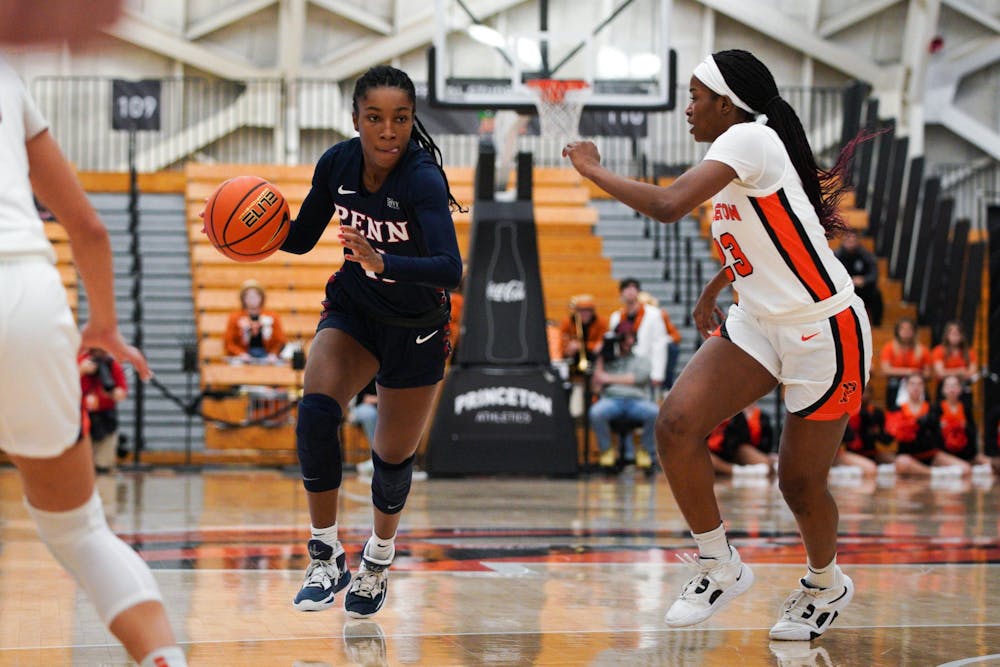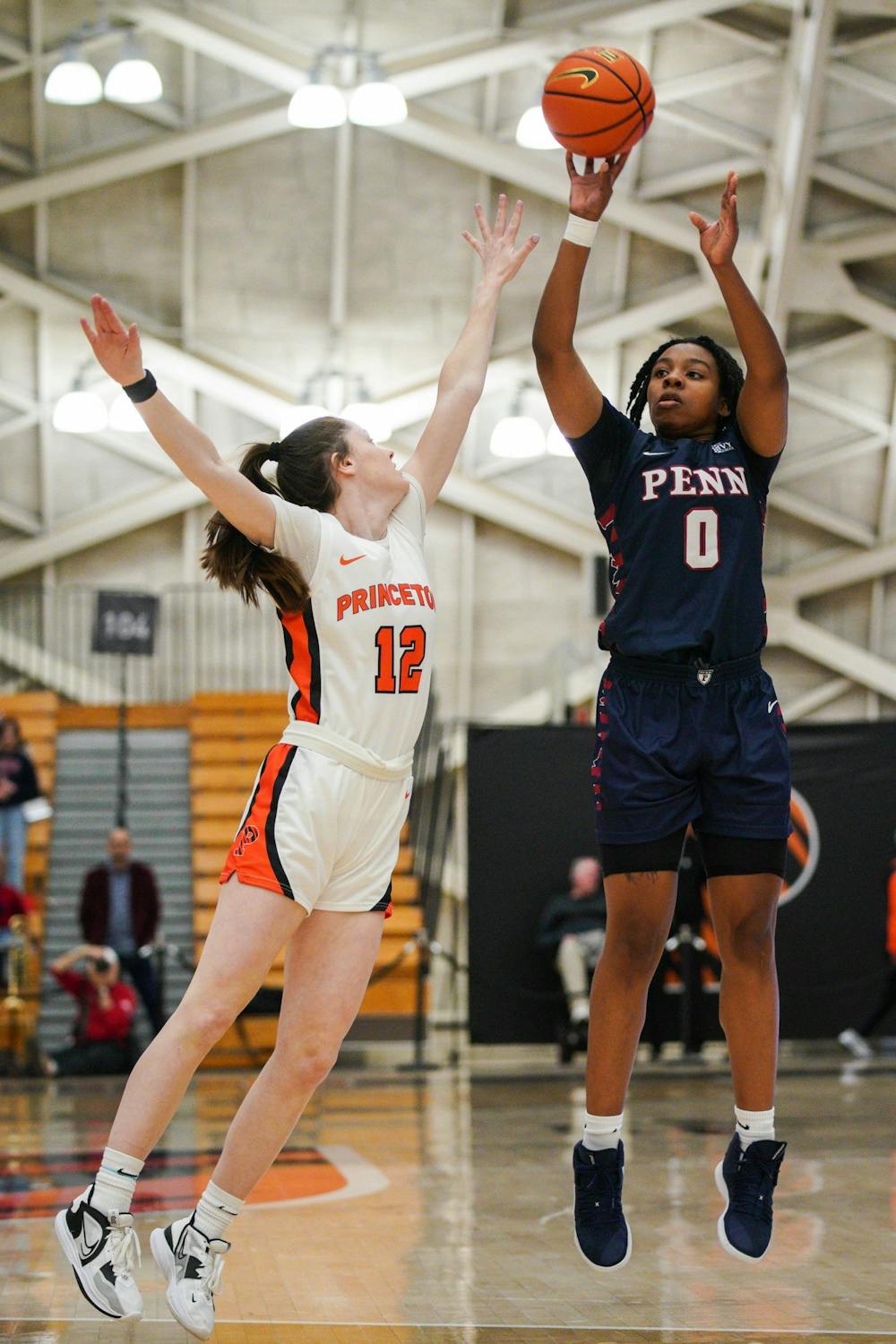
When Penn women’s basketball made the trip to Princeton, N.J. on Monday, the team had the chance to make a statement. To prove its mettle. To extend its historic win streak, and to show that the Ivy League had a new top dog.
Yet after one of their worst offensive performances of the season, the Quakers left Jadwin Gymnasium with their first conference loss, and with far more questions raised than statements made. Were their struggles against Princeton a fluke, or a sign of things to come? Does Penn have what it takes to bounce back? The Quakers still sit atop the the Ivy League with a 4-1 conference record, but their struggles against the reigning champion Tigers make Penn’s path to the title much murkier. After five games of Ancient Eight action, let’s take a look at four takeaways that will shape the rest of the season for the Red and Blue.
1. Teamwork makes the dream work
Penn’s offense has operated as a true ensemble this season, with several different contributors starring in different games. They have been at their best when ball movement is at the center of their attack, passing up good shots for great shots and wearing the opponent down together.
Against Princeton, much of that cohesiveness went out the window. Senior guard Kayla Padilla and junior forward Jordan Obi, usually the focal points of the offense, became the only points of offense, with many of their looks coming in the way of difficult shots off of isolation. The pair combined for 33 of Penn’s 48 field goal attempts, but converted just 33% of them. Coach Mike McLaughlin said there was “too much pressure” on the duo to carry the scoring load, and acknowledged that while Padilla and Obi are the pillars of the Quaker offense, relying on them completely is no way to win.
2. There’s no place like home
Other than their slip in performance, the greatest difference between Penn’s effort against Princeton and the 11-game win streak that preceded it was the venue. The Quakers won every game of their 10-game homestand from Dec. 1 to Jan. 14, and are currently 10-1 at the Palestra compared to 2-5 on the road.
The statistics tell a similar story. Penn is shooting close to 40% from the three-point line at home — that number drops to 27% when they leave Philadelphia. It goes without saying that the Quakers will need to capitalize on their remaining home games, including a rematch with Princeton on March 3. But with the Ivy League tournament taking place at Jadwin Gymnasium, the site of Penn’s most deflating game so far this season, the Quakers will also need to become more comfortable in enemy territory.

3. Floor is the fulcrum
Junior forward Floor Toonders, with her 6-foot-4 frame and monstrous wingspan, is a nightmare for opposing offenses. She leads the Ivy League in blocks with 22, and is the fulcrum behind the Quakers’ half-court defense. While she has been able to successfully anchor Penn’s stop troops for much of this season, the Tigers proved just how much the Quaker defense falters without Toonders protecting the basket.
Princeton utilized a variety of on and off-ball actions to lure Toonders out of the paint, limiting her ability to impact the game defensively.
“A lot of dribble handoffs, a lot of high ball screens,” McLaughlin said. “Schematically, I thought they did a really good job. They exposed us in some areas.”
The Tigers’ strategy earned them 22 points in the paint, and bared a weakness that Penn will need to address moving forward. Penn is a great defensive team, and Toonders is a great defensive player. However, if the Quakers want to challenge for the conference title, they will need to explore how to maintain their front when their leading stalwart is neutralized.
4. To press, or not to press?
McLaughlin has earned a reputation across the Ivy League for his full-court press — a more subtle version of the typical tactic that often results in easy points for Penn. In games against Brown and Hartford, it squeezed Penn’s opponents into a bevy of turnovers — including six steals for senior guard Mandy McGurk between the two games — resulting in easy points for the Quakers.
Against Princeton, the pressure was not so suffocating. After a few early steals, Princeton quickly diagnosed the signature tactic, forcing Penn to play a step behind defensively and eventually forcing them out of it. McLaughlin said he considered re-installing the press later in the game, potentially to give the Quakers the spark they needed. Whether that decision would have paid off is a question we will never know the answer to. Yet one certainty remains: determining when to deploy their trademark strategy will be pivotal to the Red and Blue's overall destiny.
The Daily Pennsylvanian is an independent, student-run newspaper. Please consider making a donation to support the coverage that shapes the University. Your generosity ensures a future of strong journalism at Penn.
Donate







